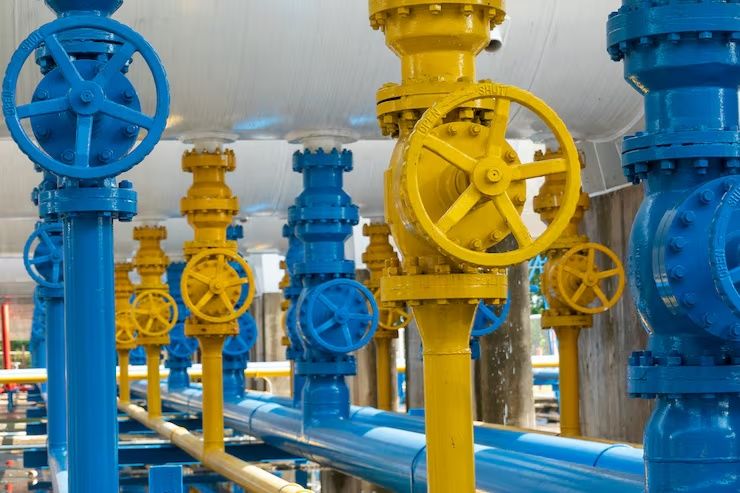Valves are mechanical devices that manage, direct, or regulate the flow of fluids (liquids, gases, slurries) by opening, closing, or partially obstructing passageways. They are ubiquitous in industries like oil & gas, water treatment, chemical processing, power generation, HVAC, and manufacturing. Without valves, pipelines and systems could not safely or efficiently control fluid movement.
Modern valve design must address high pressures, corrosive environments, tight sealing, safety, automation, and longevity. Advances in materials, actuation, and smart control systems are driving the evolution of valves suited to ever more demanding industrial applications.

Importance of Valves in Industrial Systems
-
Flow Control: Precise regulation of fluid rate and direction.
-
Shutoff & Isolation: Enabling sections of a system to be isolated for maintenance or emergency shutdown.
-
Pressure & Safety Regulation: Relief valves protect systems from overpressure.
-
Mixing & Diverting: Valves route fluids between different flow paths or combine streams.
-
Automation & Remote Operation: Actuated and smart valves support process control and safety.
Types of Valves & Their Use Cases
| Valve Type | Description / Mechanism | Typical Applications |
|---|---|---|
| Gate Valve | A sliding gate lifts to allow flow; full open/close, minimal pressure loss when open | General isolation in pipelines |
| Globe Valve | Uses a movable disk and a stationary ring seat; good throttling control | Flow regulation, throttle duties |
| Ball Valve | Spherical closure (ball) with bore through it; quick on/off | High volume shutoff with minimal leak risk |
| Butterfly Valve | Disc rotates in pipe to regulate flow; compact design | Large diameter applications, HVAC |
| Diaphragm Valve | Uses a flexible diaphragm pressing onto a seat | Corrosive fluids, slurry, hygienic / biotech systems |
| Check Valve / Non-Return Valve | Allows flow in one direction, prevents backflow | Pumps, pipelines, safety systems |
| Relief / Safety Valve | Opens automatically at set pressure to relieve excess | Pressure protection in reactors, boilers, compressors |
| Needle / Metering Valve | Fine control valve for low flows | Lab, instrumentation, precise flow control |
Each valve type has strengths and trade-offs: sealing tightness, pressure drop, response time, maintenance ease, and cost.
How to Select the Right Valve
-
Determine fluid characteristics: viscosity, temperature, corrosion, particulate content.
-
Define pressure and flow requirements (max pressure, nominal flow, allowable pressure drop).
-
Consider valve size and ratings: matching pipe size, pressure class, flange standards.
-
Evaluate actuation method: manual, pneumatic, electric, hydraulic, or smart actuators.
-
Material selection: stainless steel, carbon steel, alloys, plastics depending on environment.
-
Maintenance requirements: ease of repair, operability under system conditions.
-
Leakage tolerance and sealing class: critical for gas systems or hazardous fluids.
-
Compatibility with automation and control systems (feedback, positioners).
Recent Trends & Innovations
-
Smart / IoT Valves: Integrated sensors for position, leakage, diagnostics, enabling predictive maintenance.
-
Advanced Materials & Coatings: Use of corrosion-resistant alloys, ceramic linings, and surface treatments to extend life.
-
Compact Actuator Designs: Electric, electrohydraulic, and pneumatic actuators with smaller footprints and better response.
-
3D Printing for Valves: Rapid prototyping of complex valve geometries and lightweight internal designs.
-
Green / Clean Valves: Designs for minimal emissions (zero leakage), compliance with evolving regulations.
-
Digital Twin Models: Virtual replicas of valve behavior in varied conditions for predictive modeling and optimization.
Applications Across Sectors
-
Oil & Gas / Petrochemical: High pressure, high temperature, corrosive fluid handling.
-
Water & Wastewater Treatment: Flow and backflow control, chemical injection, sludge systems.
-
Power Plants: Steam control, feed water regulation, safety relief.
-
Chemical & Pharmaceutical: Precise metering, hygiene valves, corrosion resistance.
-
Food & Beverage: Sanitary valves, diaphragm designs, clean-in-place systems.
-
HVAC / Building Systems: Air, steam, chilled water flow control, dampers.
Tips for Valve Maintenance & Best Practices
-
Inspect regularly for leaks, seat wear, corrosion, actuator condition.
-
Lubricate moving parts as prescribed by manufacturer.
-
Validate sealing by pressure testing after maintenance.
-
Replace gaskets, diaphragms, seals proactively before failure.
-
Ensure actuation systems are calibrated and aligned.
-
Monitor valve performance (cycle times, response) to detect degradation.
-
Maintain spare parts inventory (seats, stems, seals) for quick repair.
FAQs
Q1. What’s the difference between a gate valve and a globe valve?
Gate valves offer low resistance flow when fully open but poor throttling control; globe valves work well for regulating flow but typically have higher pressure drop.
Q2. Can one valve type handle all applications?
No. Each valve type is optimized for specific conditions (fluid type, pressure, flow control vs isolation). Selecting one universally leads to inefficiency or failure.
Q3. What is valve actuation and why is it important?
Actuation is the means by which the valve is operated—manually, electrically, pneumatically, or hydraulically. It affects control speed, integration with automation, and safety.
Q4. How critical is material choice in valve selection?
Extremely. Fluids may be corrosive, abrasive, high temp, so materials must resist wear, corrosion, and maintain integrity under operating conditions.
Q5. What is smart / IoT valve technology?
Valves equipped with sensors and digital interfaces that stream data (position, leakage, performance) to control systems or cloud for monitoring, diagnostics, and predictive maintenance.
Conclusion
Valves are among the unsung but indispensable components of fluid handling systems across industries. From simple gates to complex smart control valves, their proper selection, design, and maintenance ensure safety, efficiency, and longevity of systems. As industry moves toward automation, digitalization, and stricter environmental standards, valves too will evolve — becoming smarter, more adaptable, and more robust.